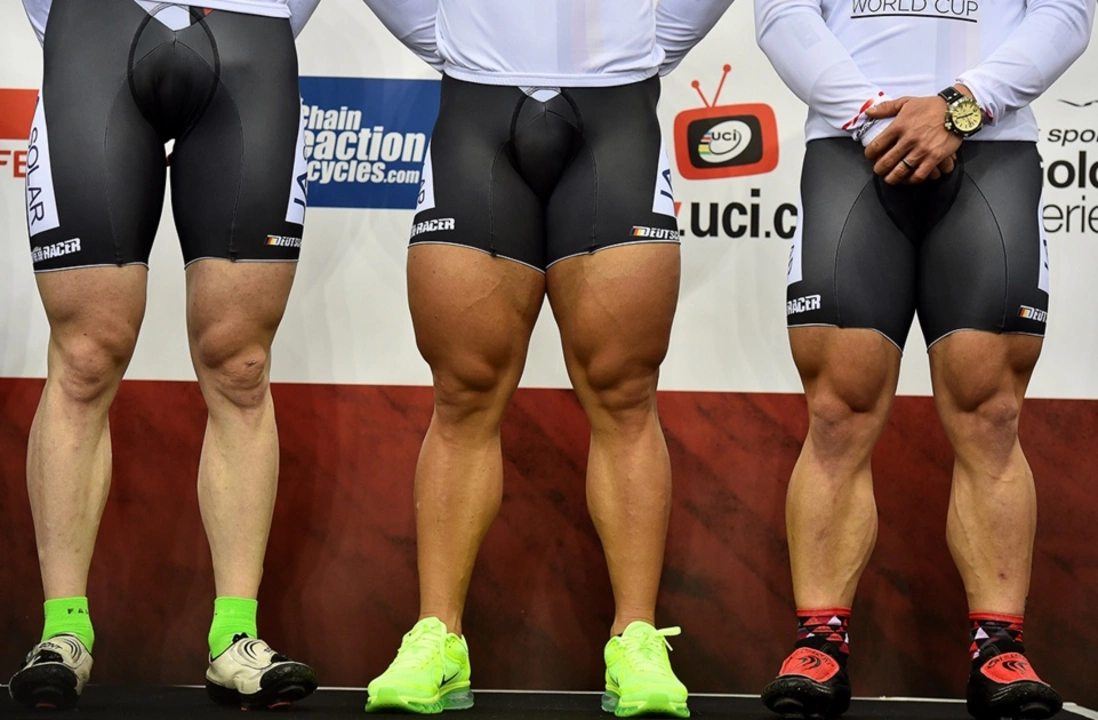Does Cycling Build Big Quads? Your Fitness Question Answered
If you’ve ever stared at a mountain biker’s massive thighs and thought, “Can I get that from my road bike?”, you’re not alone. The short answer is yes – cycling can add serious size to your quadriceps – but only if you ride smart. Most casual rides improve endurance, not bulk. To turn your daily commute into a leg‑building session, you need to change the way you pedal, the terrain you tackle, and the intensity you crank up.
How Cycling Targets Your Quads
Your quads fire every time you push the pedal down. The top‑dead‑center of the crank (when the pedal is level with the bottom) is where the muscle works hardest. When you climb a hill or sprint, you force the quads to generate high torque, which creates micro‑tears in the muscle fibers. Those tiny tears are the trigger for growth – your body repairs them stronger and larger.
But not all cycling is equal. A steady 70‑rpm ride on flat pavement feels more like a cardio session than a strength workout. The key is to incorporate short, powerful bursts that force the quads to work against resistance. Think of it as interval training on two wheels.
Tips to Maximize Quad Size
1. Hill Repeats – Find a steep hill that takes 30‑45 seconds to climb. Sprint up, then coast down for recovery. Do 5‑8 repeats per ride. The climb’s gradient forces the quads to push hard, while the recovery lets you keep the intensity high.
2. Low‑Gear Sprints – Shift to a smaller chainring or bigger rear cog and sprint for 15‑20 seconds. The low gear lets you spin fast while still applying force, creating a perfect quad‑stimulus.
3. Standing Pedals – Occasionally stand up on the pedals during a climb or sprint. Standing shifts more weight onto the quads and glutes, adding extra load without changing gear ratios.
4. Short, Punchy Intervals – Instead of a steady 60‑minute ride, try 10 minutes of 1‑minute all‑out efforts followed by 2 minutes easy spin. Repeat 4‑5 times. The high‑intensity bursts keep the quads in a growth zone.
5. Resistance Training Complement – Pair your rides with bodyweight squats, lunges, or leg presses twice a week. The extra load helps the quads adapt faster to the cycling stress.
6. Nutrition Matters – Muscles need protein to repair. Aim for 1.2‑1.6 g of protein per kilogram of body weight daily, and don’t forget carbs to fuel those high‑intensity efforts.
7. Recovery – Give your quads at least 48 hours between heavy sessions. Sleep, hydration, and light stretching speed up repair and prevent overuse injuries.
Putting it all together, a weekly plan could look like this: two days of hill repeats or sprint intervals, one day of standing climbs, two days of light endurance rides, and two strength days. Stick to the routine for 6‑8 weeks and you’ll notice thicker thighs, stronger pedal strokes, and better climbing power.
Remember, the goal isn’t just bigger quads; it’s a balanced, functional leg that can crush hills and still ride comfortably for hours. Keep the focus on varied intensity, proper recovery, and fueling right, and cycling will become your favorite leg‑building machine.
Cycling is a great way to build strong quads. It is an aerobic exercise that works all the muscles in the legs and is great for strengthening the quadriceps. Cycling also helps improve balance, coordination, and flexibility, making it a great option for those who want to build big quads. When cycling, use short, powerful bursts of energy to really put your quads to work. Incorporate hill climbs, sprints, and other challenging terrain to maximize your quad gains. With a regular cycling routine, you can start to see a noticeable increase in your quad size.
Continue reading...
